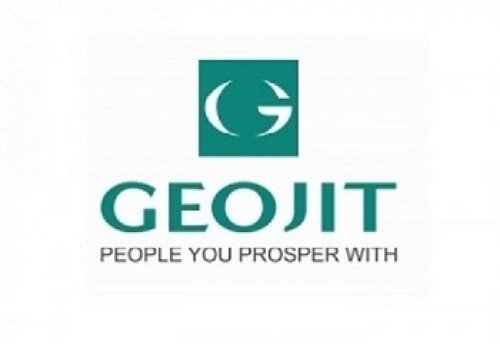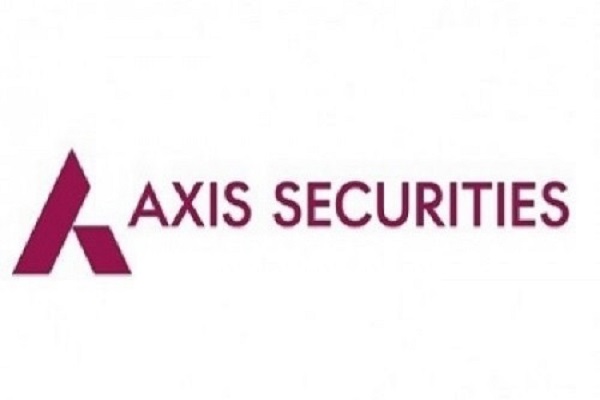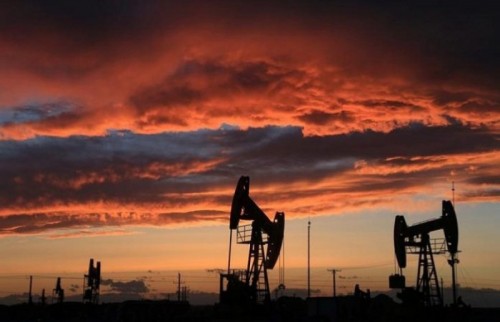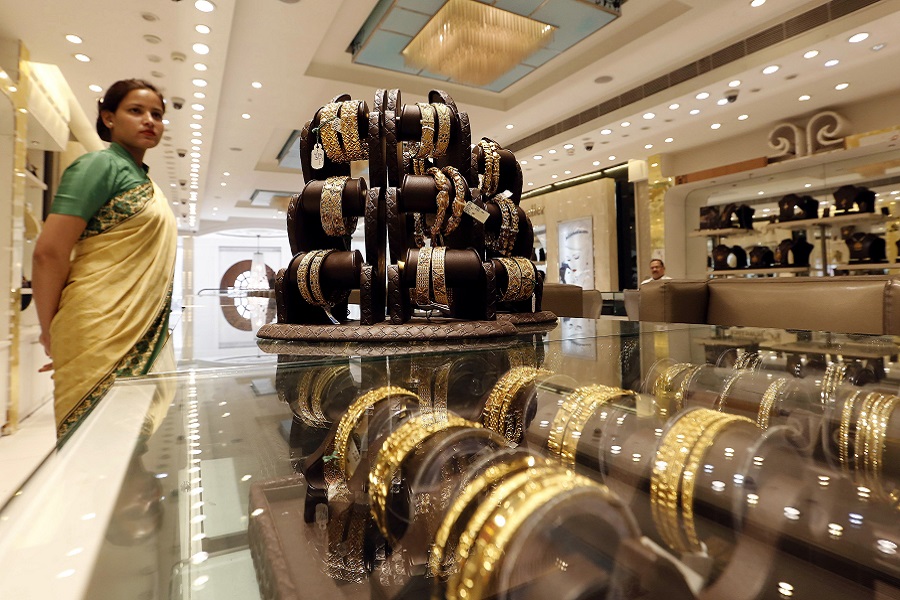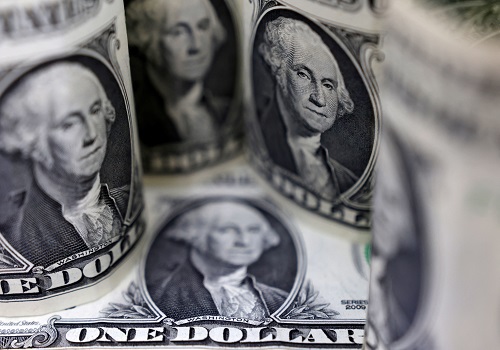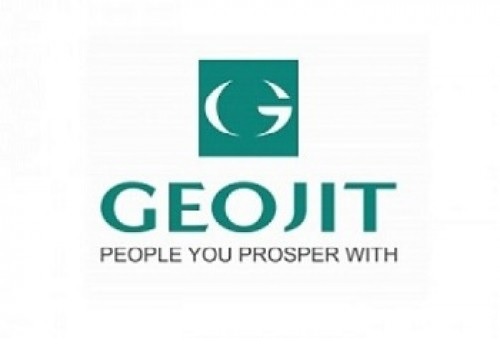Jeera trading range for the day is 19290-20210 - Kedia Advisory
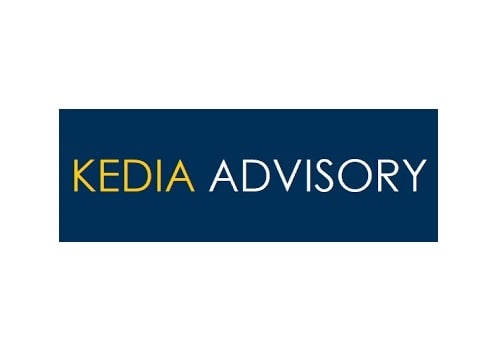
Gold
Gold prices slipped by 0.28%, settling at 97,087 amid reduced safe-haven demand following a tentative ceasefire between Iran and Israel. The geopolitical de-escalation lowered immediate buying interest in bullion, traditionally favored during global unrest. However, the downside remained limited due to a sharp drop in the US dollar and growing expectations of Federal Reserve policy easing. President Trump’s indication of nominating a new, potentially dovish Fed Chair by September or October further fueled speculation around rate cuts, especially as the US economy showed signs of strain. The Q1 2025 GDP contracted by 0.5%, the first such decline in three years, driven by lower consumer spending and exports. Simultaneously, the US goods trade deficit widened to $96.6 billion in May, well above expectations, painting a softer economic picture overall. Fed Chair Powell reinforced the dovish tone, suggesting that lower-than-expected tariffs could support disinflation, providing room for monetary easing. In the physical market, Indian gold dealers trimmed discounts to $27/oz as lower local prices rekindled demand. Conversely, premiums in China dipped to around $10/oz due to subdued activity. Global Q1 2025 gold demand rose 1% YoY to 1,206 MT, with investment demand surging 170%. However, jewellery demand dropped 21%, hitting the lowest level since the 2020 pandemic. Technically, gold remains under pressure with fresh selling as open interest rose marginally by 0.02% to 13,532 lots. Key support lies at 96,550, with deeper correction possible towards 96,015. On the upside, resistance is seen at 97,630, above which prices could test 98,175.
Trading Ideas:
* Gold trading range for the day is 96015-98175.
* Gold eases as Iran-Israel ceasefire reduces safe-haven demand.
* Downside limited by sharp U.S. dollar decline on dovish Fed expectations.
* Trump may announce new Fed Chair by September–October, potentially favoring dovish stance.
Silver
Silver prices rose 0.73%, settling at 106,755, bolstered by a weaker U.S. dollar and falling Treasury yields, which improved the appeal of non-yielding assets like silver. The metal continues to benefit from growing expectations of U.S. Federal Reserve rate cuts, following dovish signals from Chair Jerome Powell. While Powell emphasized the need for caution due to inflation risks linked to the Trump administration’s tariffs, he left the door open for a potential rate cut as early as July, especially if labor market conditions soften. On the macroeconomic front, the U.S. economy contracted by 0.5% in Q1 2025, marking the first decline in three years. The downward revision in GDP was mainly driven by weak consumer spending, which rose only 0.5%, the slowest pace since 2020. Fundamentally, silver remains underpinned by robust industrial demand and structural supply constraints. Industrial fabrication is forecast to grow 3% in 2025, surpassing 700 million ounces, largely driven by green economy sectors. While global demand is projected to remain flat at 1.2 billion ounces, jewelry demand is expected to decline by 6%, mainly due to high prices in India. Technically, silver is in short covering mode as open interest fell sharply by 39.41% to 6,546 lots while prices rose 775. Immediate support lies at 105,895, with further downside to 105,030. On the upside, resistance is at 107,535, above which prices may test 108,310.
Trading Ideas:
* Silver trading range for the day is 105030-108310.
* Silver holds firm as weaker dollar and falling U.S. yields support safe-haven demand.
* Silver supported by robust industrial demand and persistent global supply constraints.
* Dovish Fed tone boosts rate cut expectations; Powell signals flexibility on July action.
Crude oil
Crude oil prices edged lower by 0.32%, settling at 5,625 amid market caution ahead of the July 6 OPEC+ meeting, where output decisions for August will be finalized. The decline was largely attributed to reports suggesting Russia is open to supporting an output hike, if deemed necessary by the alliance, despite already elevated production levels. Additionally, U.S. shale producers continue to maintain record-high output, offsetting bullish sentiment driven by robust demand and declining inventories. On the data front, the U.S. Energy Information Administration (EIA) reported a significant 5.836 million barrel drop in crude inventories for the week ending June 20, surpassing expectations of a 0.75 million barrel decrease. Stocks at Cushing, Oklahoma, also declined by 464,000 barrels, indicating tightening supply. Gasoline and distillate inventories fell by 2.075 million and 4.066 million barrels, respectively, signaling healthy demand for refined products. Geopolitical factors also continue to influence sentiment. President Trump confirmed talks with Iran next week, hinting at potential easing of sanctions, particularly around oil exports, as part of rebuilding efforts. Meanwhile, global demand outlook remains firm. Technically, crude is under fresh selling pressure, with open interest rising 11.98% to 13,479 lots, while prices slipped by 18. Immediate support is at 5,553, and further weakness could test 5,482. On the upside, resistance is seen at 5,699, with further gains possible up to 5,774 if breached.
Trading Ideas:
* Crudeoil trading range for the day is 5482-5774.
* Crude oil falls as Russia signals openness to output hike at upcoming OPEC+ meeting.
* OPEC output already elevated; U.S. shale production remains at record highs.
* EIA: U.S. crude inventories fall 5.8 million barrels; Cushing stocks hit February low.
Natural gas
Natural gas prices fell sharply by 3.34%, settling at 300.9, as bearish pressure mounted from rising output, strong inventory builds, and reduced LNG exports. Despite hotter-than-usual temperatures in the U.S., production in the Lower 48 states averaged 105.5 bcfd so far in June, slightly higher than in May and continuing to ease the market after maintenance-driven dips in spring. The key weight on prices remains the growing storage surplus, which has suppressed bullish momentum since mid-April. U.S. utilities injected 96 billion cubic feet into storage for the week ending June 20, exceeding expectations of 88 bcf. This compares with a 59 bcf build during the same period last year and a five-year average of 79 bcf. The larger-than-normal additions marked the 10th straight week of outsized storage builds, pushing inventories to 2.898 trillion cubic feet, around 6% above the five-year average. Looking ahead, the EIA projects record production and demand in 2025, with dry gas output forecast at 105.9 bcfd, rising to 106.4 bcfd in 2026. Domestic consumption is also set to rise to 91.3 bcfd in 2025. LNG exports are expected to average 14.6 bcfd in 2025 and 16.0 bcfd in 2026, providing medium-term support. Technically, natural gas is under fresh selling pressure, with open interest surging 35.48% to 21,412 lots, signaling active bearish positioning. Key support lies at 292.1, with further downside toward 283.4. On the upside, resistance is at 310.1, and a breakout may push prices toward 319.4.
Trading Ideas:
* Naturalgas trading range for the day is 283.4-319.4.
* Natural gas prices fall on rising U.S. output and robust storage injections.
* Lower 48 production averages 105.5 bcfd in June, slightly above May.
* Storage levels remain ~6% above five-year average despite recent heatwave.
Copper
Copper prices surged by 1.16%, closing at 896, driven by growing concerns over potential tariffs from the U.S. under President Trump's administration. The anticipation of trade restrictions has led traders to shift copper inventories out of LME warehouses, causing a steep drop in available supply and tightening the global market. On-warrant copper inventories have plunged 80% year-to-date, sparking aggressive backwardation in the futures curve, with tom/next spreads widening to $40 per tonne—a clear sign of immediate supply strain. Despite a global surplus in copper for the first four months of 2025 (233,000 metric tons), regional shortages are intensifying, especially in the U.S., where COMEX futures are trading nearly 10% higher than the LME benchmark. This regional imbalance continues to support higher prices. Meanwhile, LME copper stockpiles have fallen 63% YTD to just 99,000 metric tons, with expectations of replenishment offering only short-term relief. On the demand front, the International Copper Study Group reported a 50,000-ton deficit in April, versus a 12,000-ton surplus in March. When factoring in Chinese bonded warehouse flows, April saw a 43,000-ton shortfall. China's imports of copper concentrate dropped 18% MoM in May, while unwrought copper imports fell 2.5% MoM and 16.9% YoY—highlighting both supply and demand pressures. Technically, copper is witnessing fresh buying, with open interest rising 17.78% to 7,982 lots. Immediate support lies at 889.2, with further downside at 882.3, while resistance is seen at 899.9, and a breakout may push prices toward 903.7 in the near term.
Trading Ideas:
* Copper trading range for the day is 882.3-903.7.
* Copper gains as Trump tariff threat prompts traders to shift metal between exchanges.
* LME inventories plunge 80% YTD on-warrant, driving strong backwardation in futures curve.
* Tom/next spread widens to $40/ton amid storage squeeze in key locations.
Zinc
Zinc prices rose 1.44%, closing at 260, supported by a broad-based decline in the U.S. dollar and renewed speculative buying after breaking key technical resistance levels. The dollar index hit its lowest since early 2022, as concerns emerged about the future independence of the U.S. Federal Reserve, which in turn bolstered non-yielding assets like base metals. Additional support came from a tentative ceasefire between Iran and Israel, which helped stabilize risk sentiment and lifted broader commodity demand. On the supply front, heavy rainfall disrupted production at smelters in South China, while Shanghai Futures Exchange zinc inventories dropped 5.7% week-on-week, reflecting tightening near-term availability. Meanwhile, Teck Resources’ Red Dog mine—one of the world’s largest zinc producers—reported a 20% annual decline in Q1 output. Australian smelter Nyrstar also announced a 25% annual output cut, citing ore shortages and uneconomical treatment charges. Despite these supply-side issues, the upside was limited by weak manufacturing demand in China, the world's top consumer. Chinese buyers continue to make only essential purchases amid softening factory activity. However, better-than-expected retail sales in China offered some hope for improved metals demand in the second half of the year. From a technical standpoint, fresh buying emerged, with open interest rising 7.4% to 3,788 lots. Zinc now finds support at 256.6, with deeper support at 253.1. On the upside, resistance is pegged at 263.8, and a breakout could push prices toward the next resistance level at 267.5.
Trading Ideas:
* Zinc trading range for the day is 253.1-267.5.
* Zinc rises as weak U.S. dollar boosts metals; DXY hits lowest since early 2022.
* South China smelters face rain-related disruptions; SHFE zinc inventories fall 5.7%.
* Australian smelter Nyrstar to cut output by 25% amid ore shortage and low treatment fees.
Aluminium
Aluminium prices edged higher by 0.4%, closing at 248.15, supported by tightening concerns over raw material supply and expectations of steady global manufacturing demand. The key driver for the uptrend was uncertainty around bauxite supply—the primary ore for aluminium—stemming from the Guinean government's dispute with Emirates Global Aluminium. This tension jeopardizes mining licenses in one of the world's top bauxite-producing nations, significantly impacting global supply chains. As a result, China's bauxite imports from Guinea fell 21% MoM in May, forcing Chinese smelters to diversify sourcing. While the supply risk offered upward momentum, gains were partially capped by an increase in LME aluminium inventories, reflecting adequate near-term availability. Speculative positions by large traders such as Mercuria also added to market caution. On the demand side, Japan’s aluminium premiums dropped by 41% QoQ to $108/ton for Q3 deliveries, signaling weak spot market demand and abundant supply. Similarly, U.S. physical aluminium premiums fell over 7%, driven by speculation of tariff cuts on Canadian imports, a key supplier to the U.S. Globally, primary aluminium output rose 1.5% YoY in May to 6.245 million tonnes, while China’s aluminium production increased by 5% YoY to 3.83 million tonnes in May. Technically, the market is under fresh buying pressure, with open interest rising 3.87% to 4,131 lots. Aluminium finds support at 247.1, with next support at 245.9. Resistance is seen at 248.9, and a breakout may lead prices toward 249.5.
Trading Ideas:
* Aluminium trading range for the day is 245.9-249.5.
* Aluminium rises on bauxite supply risks and hopes of strong global manufacturing demand.
* Weaker U.S. dollar and China stimulus hopes support broader base metals rally.
* Japan Q3 aluminium premium falls 41% to $108/ton—lowest since Q1 2024.
Turmeric
Turmeric prices rose by 1.2%, settling at 14,000 amid short covering after a recent correction driven by expectations of increased acreage during the current sowing season. Favorable monsoon conditions are encouraging farmers to expand turmeric cultivation, with acreage for the 2024–25 season estimated at 3.30 lakh hectares, up 10% from the previous year. However, this acreage increase may not proportionately boost production, as untimely rains and issues like crop rot and small rhizomes, especially in the Nanded region, are expected to reduce yields by 10–15%. Despite the seasonal end drawing near, market arrivals remain steady, with 13,660 quintals reported versus 11,940 quintals in the previous session. Nearly 50–55% of the new crop has been traded, and strong buyer interest continues, especially at the Duggirala market where newer stock is fetching a premium over older inventory due to better quality. Daily trade volumes remain robust at 1,000 to 1,200 bags, indicating resilient demand and strong farmer participation. Meanwhile, the Himachal Pradesh government has initiated procurement of turmeric to support natural farming, with farmer registrations open until June 15, 2025. On the export front, April 2025 shipments totaled 14,956.80 tonnes, a 6% increase YoY, though marginally lower than March’s 15,095.79 tonnes. Technically, turmeric is under short covering as open interest fell by 1.56%, suggesting a pause in selling pressure. Immediate support lies at 13,760, with further downside potential to 13,522, while resistance is seen at 14,136, and a move above that could push prices to 14,274.
Trading Ideas:
* Turmeric trading range for the day is 13522-14274.
* Turmeric gained on short covering after prices dropped due to expected increase in acreage.
* Turmeric acreage is expected to increase by 15-20% this season, supported by low competitive crop prices.
* In April 2025 around 14,956.80 tonnes were exported as against 14,109.10 tonnes in April 2024 showing a rise of 6%.
* In Nizamabad, a major spot market, the price ended at 14392.25 Rupees dropped by -0.16 percent.
Jeera
Jeera prices settled higher by 1.25% at 19,855, supported by renewed export demand and easing geopolitical concerns in key producing countries like Syria, Turkey, and Afghanistan. However, the upside remained limited due to sluggish domestic consumption and post-retail season weakness. Traders note that the export business is being fulfilled primarily through existing inventories, keeping fresh demand relatively muted. Despite the supportive global backdrop, India’s jeera exports in April 2025 fell sharply by 48.11% YoY to 19,719.60 tonnes, down from 38,004.10 tonnes a year earlier. On a positive note, there was a 13.74% MoM rise from March 2025, suggesting gradual recovery in overseas interest. Imports also declined significantly, falling 37.90% YoY and 40% MoM, indicating tighter global supply and subdued foreign availability. Farmers are holding approximately 20 lakh bags, with only 3–4 lakh bags expected to be traded before the season ends. This suggests a significant carry-forward stock of 16 lakh bags, likely to weigh on prices unless fresh export orders materialize. Production for the current season is estimated to be on par with last year, backed by favorable sowing conditions. In Unjha, the major physical market, jeera prices edged marginally lower by 0.02%, closing at 19,963.7. Technically, jeera is witnessing short covering as open interest dropped 3.67% to 5,748 lots, indicating profit booking. Immediate support is seen at 19,580, with further downside to 19,290. On the upside, resistance is likely at 20,040, with a breakout potentially testing 20,210.
Trading Ideas:
* Jeera trading range for the day is 19290-20210.
* Jeera prices continue to rise on strong export demand and easing geopolitical concerns
* However upside seen limited due to weak domestic and export demand post retail season.
* Total arrivals witnessed a marginal increase to 12,000 bags (55 kg each) as against 11,800 bags on the previous day.
* In Unjha, a major spot market, the price ended at 19963.7 Rupees dropped by -0.02 percent.
Views express by all participants are for information & academic purpose only. Kindly read disclaimer before referring below views





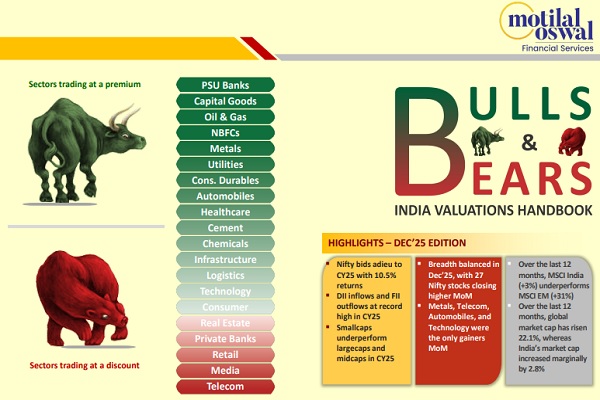


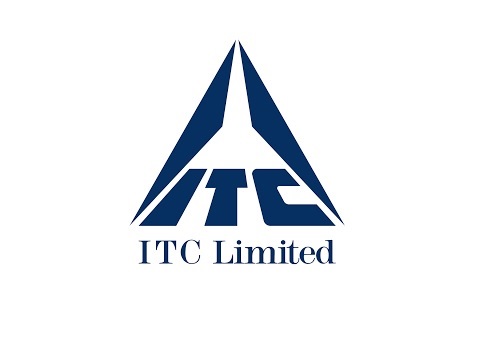

Tag News
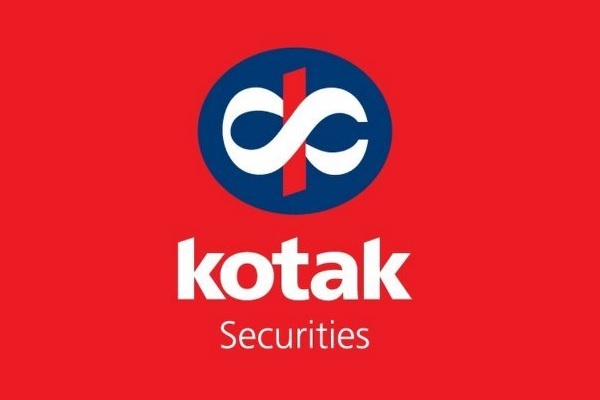
Commodity Research - Daily Evening Track 09th January 2026 by Kotak Securities Ltd
